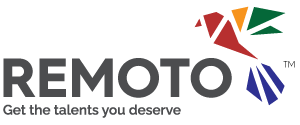IT technologies, tech social platforms and new mobile apps have significantly changed our lifestyle, media consumption habits, forms of communication, and new rules in the labor market.
In 2021, people’s predilection for remote work was already remarkable. However, during the COVID-19 pandemic, this trend was further reinforced. Will the COVID-19 pandemic change how we work and live? Yes.
Today, remote jobs are also changing how we approach and interact with co-workers. Flexibility and agility are the key factors for remote work to become the next working model in the future. Also, you can navigate these tips by implementing specific recruitment strategies that allow you to get talented remote workers for your company.
In this blog post, we’ll explain why remote jobs have forever changed the way we work and communicate with each other. Also, we’ll share with you some recruitment strategy ideas in a pandemic era.
Flexible working
One of the fundamental characteristics of remote work is flexibility. Generally, all remote employees can manage their obligations, allowing them to reconcile work and personal life better.
For example, remote workers can decide what time is best to start and finish, unlike on-site employees. Also, remote workers can better enjoy their valuable free time due to discipline and time management skills.
Some remote employees may hit the gym before or after work, cooking, take care of their children, watch their favorite TV shows, and attend dates, parties, and dinners. Remote work also benefits mental health, as it generates less stress and promotes independence, adding value to his personal life.
It’s important to note that flexibility will be achieved if companies and HR specialists actually provide training in time planning, and emotional and stress management to remote employees. Additionally, it’s important to promote a friendly work environment through effective remote onboarding strategies.
Agile working practices
Today, we live in a complex world that has challenged HR specialists and agents hiring remote employees.
The need to quickly adapt to changes in society and the market during these pandemic times has demanded an agile approach to remote work. You will want to transform your business’ organizational structure to achieve agility. Remember that organizations are no longer based on hierarchical structures but collaborative networks.
Collaboration is usually maintained through technological resources, mainly software and apps, that enhance seamless communication between employees in remote work.
According to Andy Cheng, businesses must adapt, respond quickly to changes, and reduce errors to be agile. “Agility depends on a company being flexible,” explains Cheng. Consequently, remote work allows an organization to be more agile amid rapid technological developments and cultural changes.
A future model of work
Undoubtedly, remote work has changed how we work and communicate.
In the past, we used to work tied to hierarchical organizational structures that drained our energy, causing us severe physical and mental illnesses. Today, remote work has reinforced corporate cultures based on flexibility, empathy with the employee, and a healthy balance between work and professional life.
These changes are associated with significant transformations in societies and economies amid the rise of information and communication technologies.
At Remoto Workforce Workforce, we recommend you trends related to the future of work when building a diverse workplace, which priority is to preserve the well-being and life-work harmony.
Recruitment to attract top talent amid the COVID-19 era
COVID-19 has changed the way we work and live. Many businesses have had to adapt their recruitment strategies to account for the new reality of the pandemic. Here are four strategies that can help you find and hire the best talent despite the challenges posed by COVID-19.
Think outside the traditional job board
With so many people now working remotely, online job boards are no longer the only game in town. Posting your jobs on social media platforms, such as LinkedIn, can help you reach a wider audience of potential candidates. If you want to learn more about how to recruit through LinkedIn, read our post.
Use video conferencing platforms to your advantage
While in-person interviews are not currently possible for most organizations, you can use video conferencing platforms like Zoom or Skype to conduct initial interviews with candidates. This will allow you to get to know each candidate before making a final decision.
Do you want to learn more about how to use videos for recruiting? Watch this video.
Be flexible with your start date
Many people who were laid off or furloughed due to COVID-19 may not be able to start a new job right away. However, if you’re willing to be flexible with your start date, you may be able to hire some great talent that might otherwise have been unavailable.
Don’t forget about employee referral programs
Your current employees can be a great resource for finding qualified candidates. Encourage your employees to refer friends and acquaintances who they think would be a good fit for your open positions.
Takeaway
Are you still wondering how remote work is changing the American business panorama? Will COVID-19 change the way we work and perceive professional life?
Undoubtedly, working from home has changed employees and also businesses. The emergence of a global discussion about the future of work and the role of remote work agreements in it has brought thoughts about how to create more inclusive, flexible, agile, and digital workspaces.
Have you considered flexibility and agility in your remote work model?














